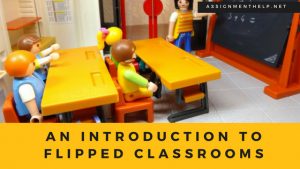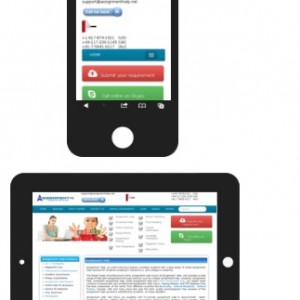An Introduction to Flipped Classrooms
What is a Flipped Classroom?
With advancements in today’s date among all the fields, education too has taken a leap ahead. The new thing today is the flipped learning classroom, which is a new kind of instructional approach. In this model, the educational content is delivered outside the classroom. It is an advanced and more interactive method than the regular classroom teaching, where the teachers encourage and guide their students as they apply the concepts and learning onto their subjects in innovative ways.

People usually picture flipped classroom as a concept where children would be just watching videos at homes or while playing, or just surfing the sites. In fact, it is much more than that, and it is the role of a teacher which can take this growing model forward and do justice to it.
A flipped classroom mainly lays its focus on the student. It brings the students to do their ‘homework’ in the classrooms, and have their learning outside the classroom, thus reversing the usual flow of classroom learning.
Why is Flipped Classroom a Must for the Students?
The new technique has many advantages for everyone, especially students. Following are the reasons which suggest that flipping your classroom is a great idea:-
1. It ends frustration related to homework
It often happens that when students do their homework at home, they do not have an instructor around to guide them or correct them if they go wrong. Due to this, they make errors or have difficulty in understanding a concept properly. If such a scenario continues, students start perceiving homework as a burden, rather than a learning exercise.
The flipped classroom, on the other hand, can put an end to this trouble. Students work on their homework under the teachers’ guidance, so they can look up for help and understand things in a better manner.
2. Students can spend more time with family and play
Due to the increasing pressure on the students nowadays, they are not much interactive with their families or do not get much time to play with. This happens as most of their time is engrossed in solving the questions that trick them. Now, if they are allowed to work on the homework in the classroom itself, students will only need to learn and understand the concepts and new lessons at home and also spend more leisure time with family and friends. This helps them to maintain a balance in their lives right from childhood by giving relevant time to studies, family and leisure.
3. A responsible attitude towards learning
By reversing the learning and homework times, students will now be studying their lessons on their own at home. This will encourage them to be more responsible towards their work, which helps them become independent in the long run too.
4. Parents too can keep up with the pace of their children
In contrast with the regular classroom study model, flipped classroom encourages the students to take their lessons at home. With this, parents too can have a fair idea of what their child is studying. This can allow them too to guide their students and have knowledge of the academic status of their child.
5. All time access to the lessons
Now, since the students are learning through videos, e-books and/or reference materials, they can access these sources of learning anytime they need. This is indeed a great aid in guiding the students whenever they need, unlike the regular schooling style where students could clear their doubts in school only. Also, as they keep on receiving the study materials with time, they will have their own set of reference material, which they can use for various purposes in the future.
6. Students centred learning
The teacher goes as per the requirement of a student, guiding him and paying more focus on the problem areas. This way, the students achieve better skills in the subjects, which help them do their homework more efficiently.
7. Students can learn at their own pace
With flipped classroom, gone are the days when the teacher used to keep on going with the lessons at her own pace and the students would get off the track, figuring out what to do in homework later. Since the study material is to be studied at home, students can learn in their own way and at their own pace. Now they have the option to hear the lectures and guidelines again and again by pause and replaying the videos, save the reference for future use and so on. This allows the student to take control of his learning, where he can use the resources in the best way suitable to him.
How to Flip your Classroom?
It is not an easy task to reverse the mindset of students in one go, as they have developed the habit of experiencing learning in a regular classroom, i.e. facing the teacher and listening to her while she explains concepts on the board behind her. A well-planned schedule is necessary to execute the concept well so that the students too enjoy the new way of education, and you too can make the best out of your efforts.
On the other hand, if you suddenly announce about flipping the class and expect them to adapt to it all in one go, it may confuse or stress them out, which may ultimately bring you back to the traditional style. To avoid this, the following are few important steps in gradually stepping toward the flipped classroom.
1. Introduce the new concept to your students
To make the students adapt well to the new change, it is important to explain to them what a flipped classroom actually is and how will it benefit them. A group discussion can be a good way to know what they are actually feeling about the new concept. Encourage an open discussion in your class about what they think about this concept and what can be the possible outcomes of the same. It may happen that some will oppose the change, hence explain to them the benefits and encourage them to find out the benefits of a flipped classroom on their own too. This way, the students will get tuned well with the new teaching style, which will help in the further execution of a flipped classroom.
2. Announce a date for it
Yes, build up the zeal for it among the children to make the concept a hit! This way, not only the students will be well informed about the change in the education style, but they will be curious and excited to have it as well.
3. Provide access to the internet for each student
Now, the students will be doing the homework in the class and the learning back at home. Hence, they would be requiring a lot of sources to study such as websites, online reference materials, videos etc. Therefore, it is a must that each student should have access to the internet for doing his work.
4. Make your class more interactive
It should not look like the classroom is not available just to do your homework. It should rather be presented as if you are learning while doing your homework! Develop exercises, outings, assignments etc which promote teamwork and collaborative learning. Going this way, the children will learn teamwork and coordination with each other along with doing their own work. Also, arrange a field study for students from time to time, as it is an excellent way to observe things around you. Flipping the classroom should be more like making learning more fun for students in the class, rather than plainly doing the homework.
5. Let the students take their own lead
Since flipped learning classroom lays its entire focus on the students itself, it is important to end the habit of simply mugging up what the teacher writes at the board. Motivate your students to read and explore more from the knowledge around them.
How to Develop the Flipped Classroom Curriculum for Students?
Make videos related to the topics mentioned in lessons
A video is undoubtedly the best way to explain a concept. It gives a clear illustration similar to what exactly you would have explained in the classroom. Now the students can have the same lessons at home with the videos you provide. There are a number of video makers, software and apps that can help you build great videos on your own. Students can watch them and understand the lessons at their own pace as they can pause and rewind the videos, something which is not possible in the regular classroom system.
Provide references online
For each topic, there are plenty of resources available on the internet which can provide you an ample amount of information. Choose the right ones from them and share the links with your students, so that they can access the same information and learn new things.
What are the Benefits of Flipping the Classroom?
Many! Flipping the usual classroom model comes with various benefits, out of which some are listed below:
1. Students will be more engaged
The entire focus of the flipped classroom concept lies with the students. Doing homework during the class hours will allow the students to apply their knowledge of the problems and find solutions. Also, there are various activities conducted in the class which encourage teamwork. Such a program keeps the students engaged in academics.
2. Learning happens at students’ own pace
Students can pause and replay the videos, which is a great help in giving students control over their learning, as they can learn at their own rate.
3. Teachers can be available to guide students
Now teachers can guide the students in the right direction while they use their skills and knowledge to solve the problems. With flipped classroom, students will not struggle anymore with homework at home, as teachers can help or correct them whenever needed.
With flipped classroom, students have a lot of benefits, which makes them more focused and motivated towards their studies. With a little effort from your end, you can deliver students a large amount of information, going through which they would neither get bored nor feel left out.
